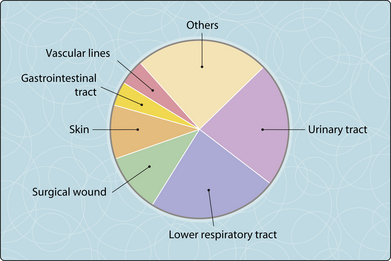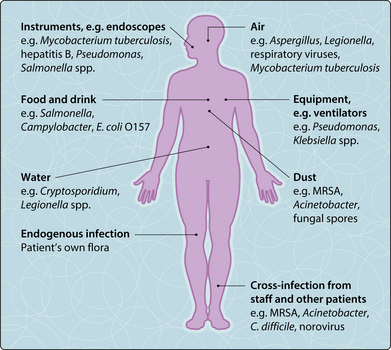37. Principles of hospital infection control
In England, the prevalence of hospital-acquired infection (HAI; nosocomial) in 2006 was 8.2%. These infections (Fig. 3.37.1) increase patient’s morbidity, mortality, length of stay and add to the economic burden. It is estimated that approximately 5000 patients die as a result of HAIs in the UK each year.
Sources of infection
HAIs are infections acquired in hospital that were not incubating or present at admission. Exogenous infections are ones where the source of infection is the environment (e.g. via contaminated food, fluids, equipment and air) or through cross-infection from staff, visitors or other patients. Endogenous infections are where the pathogens causing infections are acquired from the patient’s own microflora (e.g. vascular line sepsis from common skin bacteria). The sources of HAIs and common causative pathogens are shown in Fig. 3.37.2.
< div class='tao-gold-member'>











